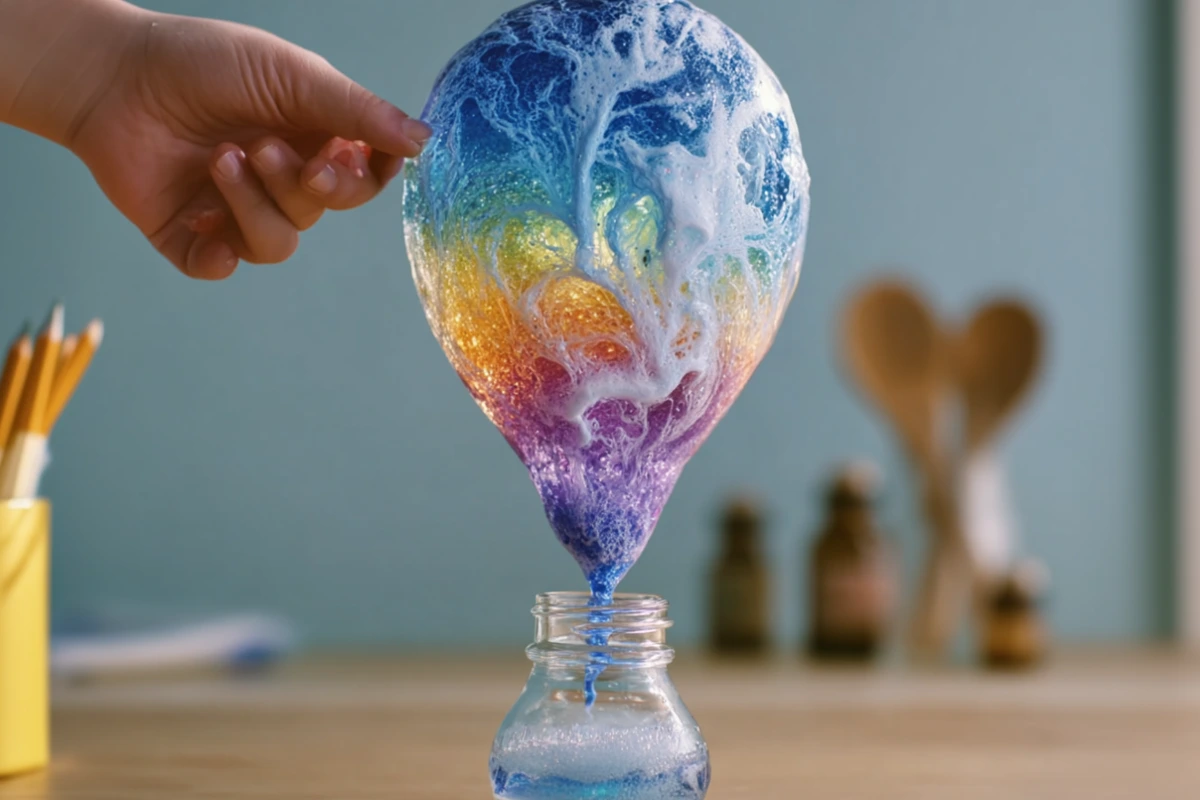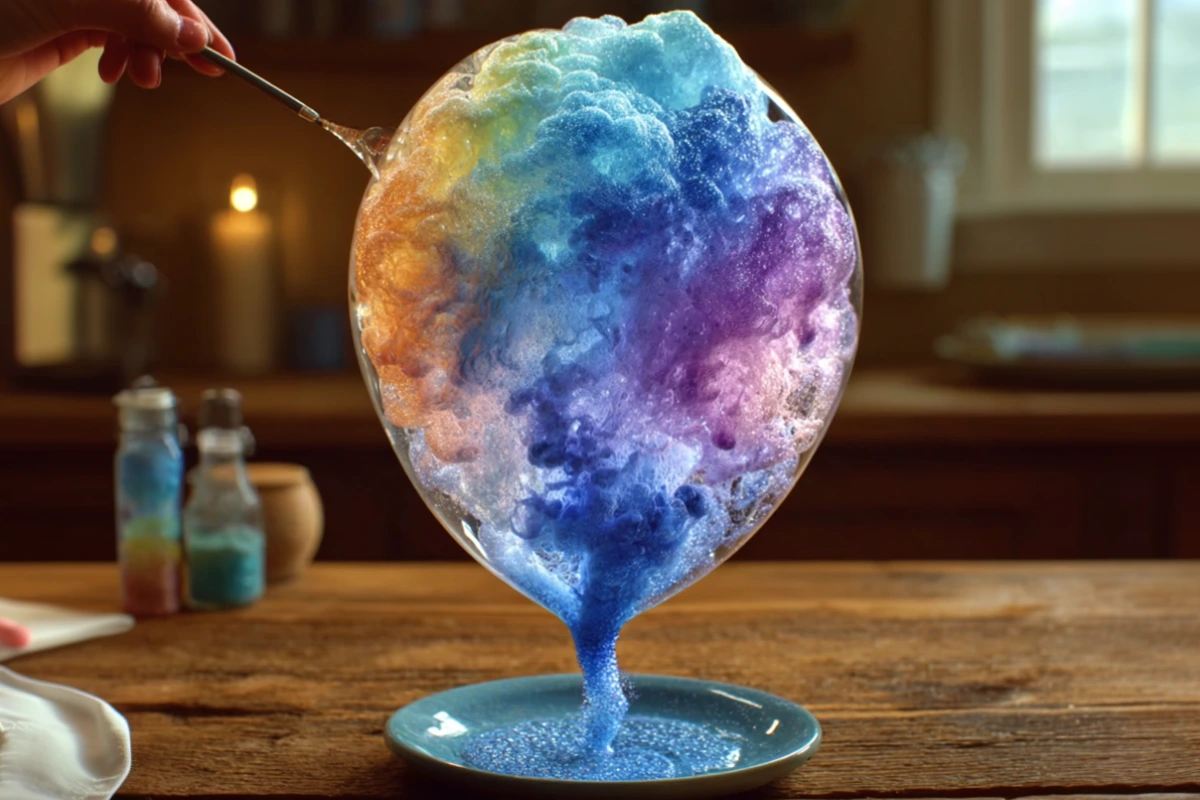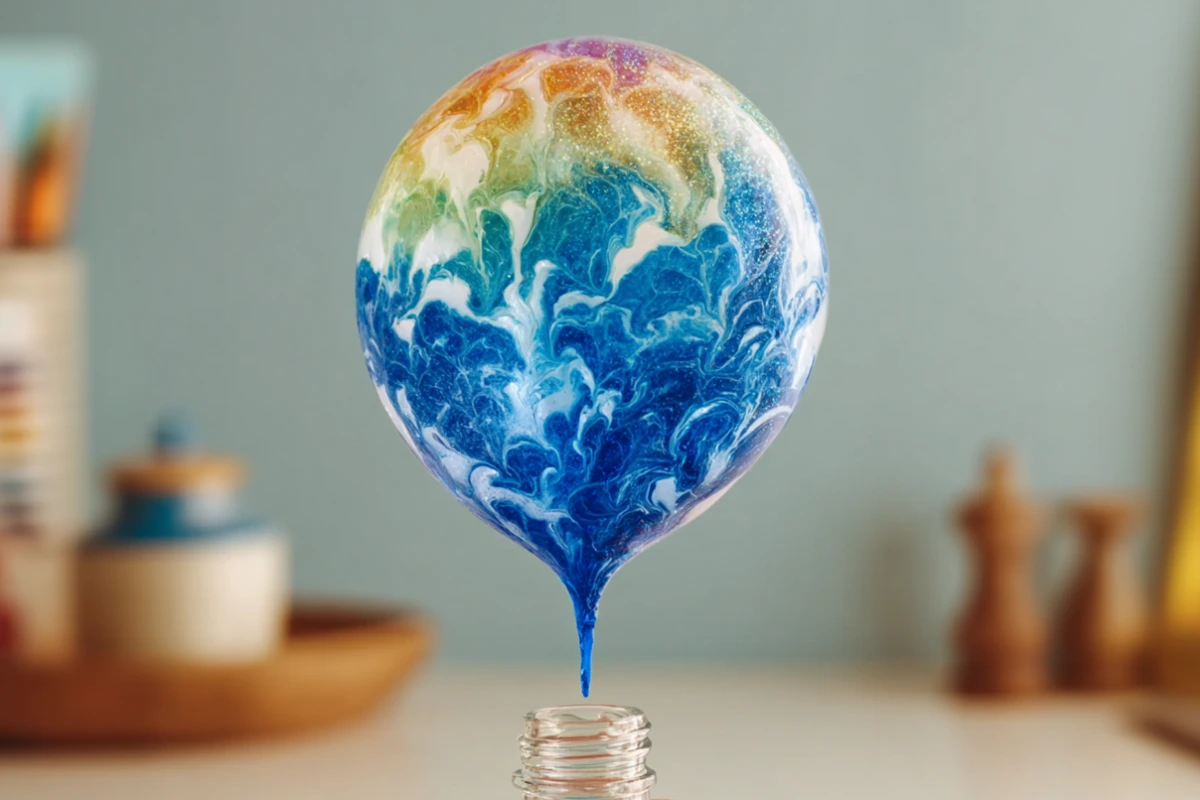Introduction to the Balloon Baking Soda Experiment
[amazon_auto_links id=”2723″]
Ever wish you could turn your kitchen into a mini science lab? With just a few common household items, you can wow your kids (or your inner child) with a fizzy, balloon-inflating blast of science. The balloon baking soda experiment is more than just fun—it’s a safe, hands-on way to learn basic chemistry in an exciting, visual way. Perfect for a rainy day or a mini science fair at home!
Everything You Need for the Balloon Baking Soda Experiment
With just a few household staples and a dash of creativity, you’re ready to kick off this fizzy science project in minutes. Here’s a quick shopping checklist to get you started:
Basic Supplies (Easily Found on Amazon):
-
Balloons – any color or size for fun results – Shop Balloons
-
Small plastic bottles – empty water bottles work great – Get a Pack
-
Baking soda – the fizzy base of your experiment – Buy Baking Soda
-
White vinegar – triggers the chemical reaction – Order Vinegar
-
Plastic funnel – for easy pouring (or make a paper cone) – Check Options
Optional Fun Add-Ons:
-
Food coloring – for bold, colorful fizz – Shop Food Colors
-
Glitter – adds sparkle to your science – Get Glitter Here
-
Essential oils – lavender or peppermint for a sensory twist – Explore Scents
With these tools and ingredients, you’re set for a hands-on, kid-friendly chemistry experience that’s equal parts education and entertainment.
Materials You’ll Need (Per Balloon)
[amazon_auto_links id=”2723″]
Basic Supplies List:
-
1 balloon (any color)
-
1 small plastic bottle (a used water bottle works great)
-
2–3 tablespoons of baking soda
-
½ cup of vinegar
-
1 funnel or homemade paper cone
Optional Add-Ons:
-
A few drops of food coloring
-
Glitter for sparkle
-
Essential oils for scent
Where to Find These Items Easily:
Most of these are likely already in your kitchen! Balloons and funnels can be picked up at any dollar store, and if you’re feeling extra creative, grab some glitter and coloring from the craft aisle.

How This Science Magic Works
[amazon_auto_links id=”2723″]
So what exactly is happening inside that bottle? When baking soda (a base) meets vinegar (an acid), a chemical reaction occurs. That reaction produces carbon dioxide gas. As the gas is released, it looks for space—rising up and inflating the balloon as if by magic.
Think of it like shaking up a soda bottle. All those bubbles have to go somewhere, and when they do—POOF! You get action!
Step-by-Step Directions
Step 1: Prep the Balloon
Using a funnel (or a paper cone), gently pour 2–3 tablespoons of baking soda into the balloon. Hold the balloon upright so the powder stays inside. Be careful not to jostle it too much—you want to save the magic for later!
Step 2: Fill the Bottle
Pour ½ cup of vinegar into your bottle. Want to add some extra flair? Drop in a few drops of food coloring or a pinch of glitter for a colorful surprise.
Step 3: Attach and Lift
Now, the trickiest part: stretch the balloon’s neck over the mouth of the bottle. Make sure it’s snug and sealed—but don’t tip it yet! You don’t want the baking soda falling in before you’re ready.
Step 4: Watch the Magic!
Once the balloon is on tight, lift it up so the baking soda drops into the vinegar. BOOM! The fizzy reaction begins, and the balloon inflates right before your eyes. Stand back and enjoy the show!
The Science Explained in Kid-Friendly Terms
Chemistry doesn’t have to be complicated. Here’s how to break it down for kids:
-
Baking soda is a base.
-
Vinegar is an acid.
-
When they mix, they create a gas called carbon dioxide.
-
That gas wants space, so it fills up the balloon like blowing up a balloon with your breath—but it’s the gas doing the work!
Educational Benefits of This Experiment
[amazon_auto_links id=”2723″]
-
Builds Curiosity: Kids love watching the unexpected happen!
-
Teaches Cause and Effect: Mix this and that, and something new happens.
-
Hands-on Learning: It’s science you can see, touch, and hear.
-
Motor Skill Practice: Pouring, stretching, and funneling help develop coordination.

Sensory Play and Creative Twists
Want to take it to the next level? Try these:
-
Add glitter for visual stimulation.
-
Use food coloring to mix and match balloon-and-liquid combos.
-
Add a drop of essential oil for a calming or energizing aroma—lavender or peppermint are great picks!
Safety Tips for Parents and Teachers
This experiment is super safe—but here are a few tips:
-
Always supervise younger children.
-
Keep ingredients out of eyes and mouths.
-
Do the experiment on a tray or in a sink to catch any fizz overflow.
-
Use safety scissors to cut the balloon open if needed (not your teeth!).
Frequently Asked Questions (FAQ) About the Experiment
[amazon_auto_links id=”2723″]
-
Can I use a different bottle size? Yes, but the balloon size may need adjusting.
-
Does brand of vinegar matter? Not really. White vinegar works best, but apple cider will do.
-
Can I store the balloons after inflating? They’ll deflate eventually—this isn’t helium, but carbon dioxide.
-
Can this pop the balloon? Not unless you add way too much baking soda!
-
What age is this best for? Ideal for ages 4+, with supervision.
Expanding the Experiment
Want to make it more educational or competitive?
-
Change the vinegar amount and compare results.
-
Try different balloon sizes and predict which inflates more.
-
Host a balloon race—see whose balloon fills fastest using different combos.
Hosting a Science Day or Party
Planning a party or classroom activity?
-
Set up multiple stations with different colored balloons.
-
Offer a “decorate your balloon” craft before the experiment.
-
Give kids lab coats (or oversized white T-shirts) to wear for fun!
Troubleshooting Tips
[amazon_auto_links id=”2723″]
-
Balloon didn’t inflate? Check that the seal was tight and enough baking soda was used.
-
Reaction fizzled fast? Try fresher vinegar or a larger amount.
-
Overflow everywhere? Use a tray and reduce the vinegar next time.
Incorporating Learning Standards
Teachers and homeschoolers: This experiment hits key early STEM learning standards in:
-
Cause and effect
-
Simple chemical reactions
-
Measurement and observation
-
Scientific method (hypothesis, test, result)

Real-Life Application of the Concepts
Guess what? You’re already using these ideas in the kitchen!
-
Baking: Baking soda reacts with acidic ingredients to help cakes rise.
-
Soda: Carbon dioxide is what gives soft drinks their fizz.
-
Fire extinguishers: Some use a reaction like this to smother flames!
Conclusion
The balloon baking soda experiment is proof that science doesn’t need a lab coat or a high-tech classroom. With simple kitchen ingredients and a sense of wonder, you and your kids can unlock the secrets of chemistry in the most exciting way. Whether you’re hosting a science-themed party or just looking to fill an afternoon with curiosity, this hands-on project is guaranteed to bring smiles—and maybe a few “whoas!”
So grab those balloons, shake up your vinegar, and let the fizzy magic begin!
FAQs
[amazon_auto_links id=”2723″]
1. Can I reuse the balloon for another round?
You can, but the balloon might stretch out and not seal as tightly the second time.
2. Is this experiment messy?
A little—but it’s easy to contain on a tray or in the sink.
3. How long does the balloon stay inflated?
About 5–10 minutes before it begins to deflate naturally.
4. Can I use lemon juice instead of vinegar?
Yes! Any acidic liquid will work—lemon juice gives a fun citrus scent, too.
5. Will this work with baking powder instead of baking soda?
Not as well. Baking powder already contains an acid and base, so the reaction is slower and less dramatic.
[amazon_auto_links id=”2723″]
Print
Balloon Baking Soda Experiment
- Total Time: 5 minutes
- Yield: 1 experiment 1x
Description
Watch a balloon magically inflate using baking soda and vinegar in this fun and educational science experiment for kids.
Ingredients
1 balloon (any color)
1 small plastic bottle (e.g. water bottle)
2–3 tablespoons baking soda
½ cup vinegar
Funnel or paper cone
Optional: food coloring, glitter, or essential oils
Instructions
Use a funnel to add baking soda to a balloon.
Pour vinegar into a small bottle and add food coloring (optional).
Stretch the balloon over the bottle opening.
Lift the balloon to release baking soda into the vinegar.
Watch the balloon inflate from the chemical reaction!
Notes
Be careful not to spill the baking soda when filling the balloon. Add glitter or essential oils for a fun sensory twist. Great for a science fair or classroom project!
- Prep Time: 5 minutes
- Cook Time: 0 minutes
- Category: Science Activity
- Method: Chemical Reaction
- Cuisine: Educational
Nutrition
- Serving Size: 1 balloon experiment
- Calories: N/A
- Sugar: N/A
- Sodium: N/A
- Fat: N/A
- Saturated Fat: N/A
- Unsaturated Fat: N/A
- Trans Fat: N/A
- Carbohydrates: N/A
- Fiber: N/A
- Protein: N/A
- Cholesterol: N/A
Keywords: baking soda experiment, balloon science, vinegar and baking soda, STEM for kids, DIY balloon activity
